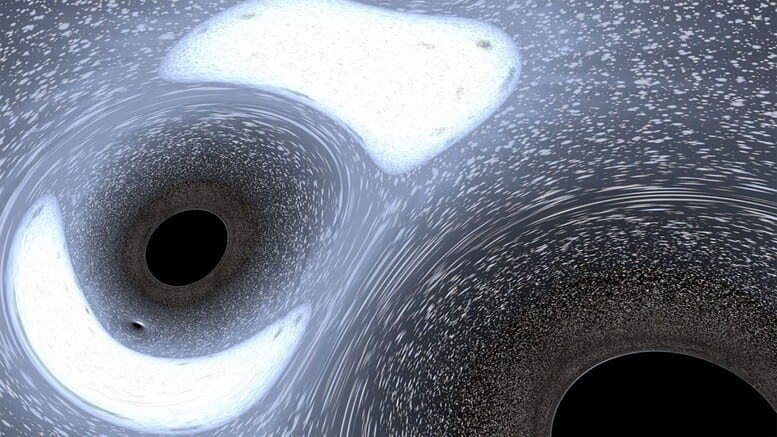Northwestern Hosts International Conference for Gravitational-Wave Researchers
March 13, 2023

Northwestern played a crucial role in the historic detection of gravitational waves, which were first predicted by Albert Einstein in 1916. On September 14, 2015, a team of more than 1,000 scientists and engineers from around the world detected these ripples in the fabric of spacetime, marking a major milestone in our understanding of the universe.
Since then, sophisticated detectors in the United States and Italy have discovered more than 90 signals from the mergers of black holes and/or neutron stars. Now, hundreds of gravitational-wave researchers involved in these discoveries are gathering at Northwestern University for an international conference from March 13-17.
Hosted by Northwestern’s Center for Interdisciplinary Exploration and Research in Astrophysics (CIERA), this conference marks the first in-person meeting in the United States since the pandemic began. The community of three science collaborations holds working meetings twice a year, and this conference is expected to be critical in preparing for the next period of gravitational-wave discoveries with detectors featuring the highest sensitivity ever.
CIERA director Vicky Kalogera, who is also the faculty lead of the Northwestern group in the LIGO Scientific Collaboration (LSC) and the Daniel I. Linzer Distinguished University Professor of Physics and Astronomy in the Weinberg College of Arts and Sciences, emphasized the importance of face-to-face presentations, discussions, and brainstorming during the conference.
Although the scientific conference is not open to the public, CIERA is holding two related public events on March 14 to engage the broader community in this exciting field of research.
Learn more in Northwestern Now’s article, “Northwestern to host gravitational-wave researchers from around the globe.”
Science & Technology

Northwestern accelerates quantum research with NVIDIA technology
September 19, 2025
NVIDIA code could help researchers tackle computationally demanding tasks hindering quantum research Northwestern University physicists are using NVIDIA technology to tackle the computationally demanding tasks hindering quantum research. Northwestern theoretical physicist Jens Koch and his research group…

CRISPR’s efficiency triples with DNA-wrapped nanoparticles
September 18, 2025
New system delivers CRISPR machinery more safely and effectively into cells With the power to rewrite the genetic code underlying countless diseases, CRISPR holds immense promise to revolutionize medicine. But until scientists can deliver its…

Passion for the planet: A new generation of environmental stewards starts here
May 29, 2025
Over the last two decades, the Weinberg College-housed Program in Environmental Policy and Culture (EPC) at Northwestern has embraced the humanities and social sciences and cultivated a new generation of environmental stewards. Growing up in…

Northwestern receives $25 million gift to advance adolescent mental health research
May 16, 2025
New institute will study psychology of emerging adults, leading to innovative wellness programming for students at the University and beyond Northwestern University is launching the Institute for Adolescent Mental Health and Well-Being, an interdisciplinary initiative…



